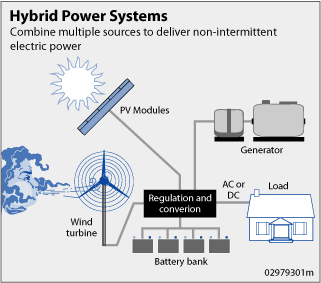There is no doubt in my mind that times have changed.
Life has emerged from the pandemic business as usual, I’m afraid.
Okay, so where exactly am I going with this?
To provide perspective, let’s look at just one piece of the entire worldwide greenhouse-gas-emissions-reduction picture, or dare I say, puzzle: California.
On this very matter, here is some of what one group, Next 10, reported yesterday as a matter of fact. From Next 10’s Mar. 14, 2024 press release:
“California has pledged to cut greenhouse gas emissions far beyond the record low seen during the pandemic, but new data shows this goal will prove challenging amid an emissions upswing following the lifting of lockdown restrictions. A staggering increase in power sector emissions, particularly from in-state generation, in recent years is offsetting progress made in the transportation sector, and threatening the state’s goals overall, according to the 15th annual California Green Innovation Index, released today [Mar. 14, 2024] by the nonpartisan nonprofit Next 10 and prepared by Beacon Economics.
“California has worked hard to decouple its economy from the burning of fossil fuels, resulting in some of the lowest per-capita emissions in the United States, but annual greenhouse gas jumped 3.4% in 2021, a rebound following the pandemic, according to the latest data from the California Air Resources Board (CARB). A preliminary estimate from the agency shows the state’s emissions started trending downward again in 2022, but the 2021 emissions remained 121.3 MMTCO2e above the 2030 target of nearly 260 MMTCO2e.
“‘The increase in emissions following the pandemic makes it all the more difficult for California to meet its climate goals on time,’ said F. Noel Perry, Founder of Next 10. ‘In fact, we may be further behind than many people realize. If you look at the trajectory since 2010, California won’t meet our 2030 climate goal until 2047. We need to triple the rate of decarbonization progress each year to hit that target.’
“Efforts to promote renewable power as well as zero-emission buildings and vehicles will have to dramatically accelerate in order to achieve the state’s goal of slashing greenhouse gas emissions by 40% below 1990 levels by 2030, according to the new report. To meet that benchmark, California would need to triple the rate of emissions cuts we’ve made since 2010—going from the actual average annual reduction of about 1.5% a year to about 4.6% a year, according to an analysis of CARB data by Beacon Economics. That percentage could be even higher as emissions data for 2023 isn’t available yet.”
Does all of this mean that California won’t reach its 2030 GHG-emissions-reduction targets in 2030?
“‘While California is well-positioned as a leader on climate, there are substantial obstacles to accelerating our decarbonization efforts in an equitable way that benefits all Californians,’ said Perry. ‘These are not insurmountable, but we need to act urgently in order to achieve these goals on time.’”
If that last part sounds like a clarion call for the state to not only get its GHG-emissions-reductions act in order but also into high gear at the same time, then maybe, just maybe, it’s time more force be put down on the state GHG-accelerator cleanup pedal. If not, then it should come as no surprise should the state not meet its 2030 GHG-emissions-reduction goals.
For more, see the “Greenhouse gas emissions are dropping in key sectors, but California still not on pace to achieve 2030 climate goal as emissions rebound following lockdown,” Mar. 14, 2024 Next 10 press release.
Corresponding, connected home-page-featured image: U.S. Department of Energy
— Alan Kandel
Copyrighted material.
